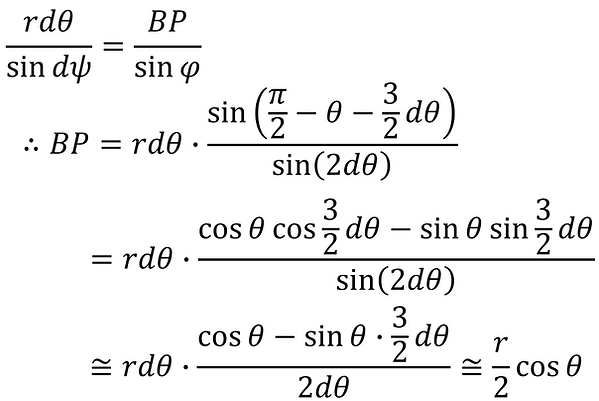Astigmatism occurs when light is obliquely incident on a spherical mirror
Consider the following system of oblique reflection by a mirror. In this case, the focal length in the sagittal direction (red line) is r/(2cosθ), and the focal length in the tangential direction (blue line) is (r cosθ)/2 (in the paraxial region), resulting in large astigmatism.

Below, we will consider the reasons for this.
-
Derivation of the focal length of the tangential component
First, as shown below, consider only the tangential component in a system where light is reflected obliquely by a mirror.

Here, dθ and dψ are small quantities.
The conditions shown in the figure can be expressed as follows:

From Law of Sines,

Therefore, it was shown that the focal length in the tangential direction is (r cos θ)/2.
-
Derivation of the focal length of the sagittal component
Next, as shown below, consider only the sagittal component in a system where light is reflected obliquely by a mirror.

Each direction vector is expressed as follows:

Substituting ① and ② into ③,

Moreover, the vectors between each point are expressed as follows:

Here, k is a positive real number,

If we substitute ③' and ⑥ into this and compare the z components, we get

Substituting ③' and ⑧ into ⑦, we get

Compare this with ⑥

Therefore, from ⑤,

Here, if 𝜑 ≅ 0, then cos𝜑 ≅ 1, so

Therefore, it is shown that the focal length in the tangential direction is r/(2cosθ).
